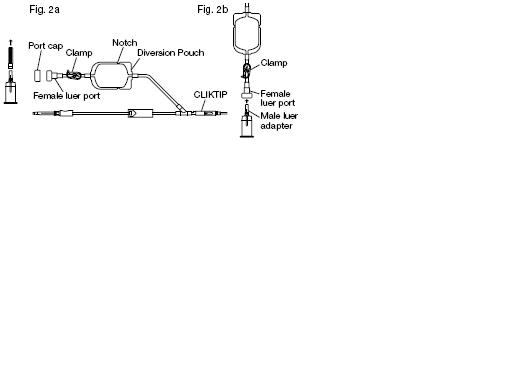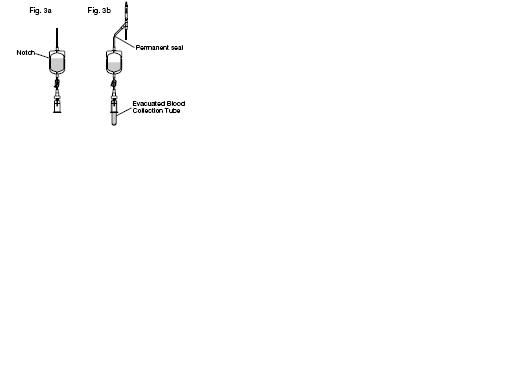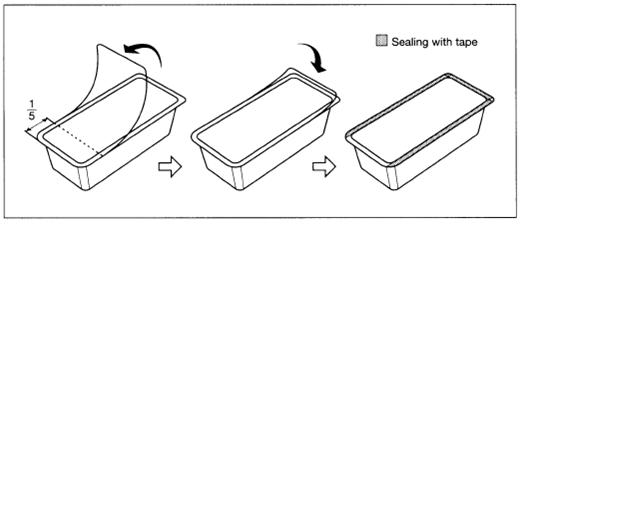TERUFLEX BLOOD BAG SYSTEM WITH DIVERSION BLOOD SAMPLING ARM ANTICOAGULANT CITRATE PHOSPHATE DEXTROSE (CPD) AND OPTISOL (AS-5) RED CELL PRESERVATIVE (anticoagulant citrate phosphate dextrose- cpd and as-5 red cell preservative kit
TERUFLEX Blood Bag System with Diversion Blood Sampling Arm Anticoagulant Citrate Phosphate Dextrose (CPD) AND OPTISOL (AS-5) Red Cell Preservative by
Drug Labeling and Warnings
TERUFLEX Blood Bag System with Diversion Blood Sampling Arm Anticoagulant Citrate Phosphate Dextrose (CPD) AND OPTISOL (AS-5) Red Cell Preservative by is a Prescription medication manufactured, distributed, or labeled by Terumo Corporation, Terumo Corp. - Fujinomiya Factory. Drug facts, warnings, and ingredients follow.
Drug Details [pdf]
-
INDICATIONS & USAGE
Issued 6/03
TERUFLEX® BLOOD BAG SYSTEM With DIVERSION BLOOD SAMPLING ARM® CPD/OPTISOL® SOLUTION
Read these instructions carefully before use. Rx ONLY.
The Diversion Blood Sampling Arm™ is intended to divert and collect blood for obtaining donor test samples.
For single use only. Sterile and non-pyrogenic fluid path. Sterilized by steam.
Intended for the collection, processing and preservation of human blood and components.
PRECAUTIONS
Do not use unless the solutions are clear.
Avoid excessive heat and direct sunlight. Protect from freezing.
Recommended storage conditions: Room Temperature (15-30°C/59-86°F).
The blood bag configuration is specified on the blister pack label.
CAUTION Do not use a dielectric tube sealer to seal the tubing while the needle is connected to the donor's body unless it is approved for such a purpose.
INSTRUCTIONS FOR BLOOD COLLECTION: Use aseptic technique
Materials Needed:
VENOJECT® ll Tube Holder (code P-1316R) or equivalent
VENOJECT® ll Multi-Sample Luer Adapter (code MN *2000T) or equivalent
Evacuated Blood Collection Tubes (glass or plastic)
1. Prepare the blood bag following your institution's standard operating procedures.
2. If applicable, make a loose knot in the donor tubing below the "Y" and CLIKTIP™ (inline closure device) unless alternate methods are used to seal the tubing at the end of collection.
3. Temporarily clamp the donor tubing between the phlebotomy needle and the "Y".
4. Close the White Clamp below the diversion pouch.
5. Tube Holder/Luer Adapter Assembly:
a) Connect the VENOJECT II Multi-Sample Luer Adapter to the VENOJECT II Tube Holder (or equivalent) (Fig.1).
Insert Fig. 1 here
 b) Twist and snap to remove the blue port cap at the end of the Diversion Blood sampling Arm (Fig. 2a).
b) Twist and snap to remove the blue port cap at the end of the Diversion Blood sampling Arm (Fig. 2a).
c) Connect the multi-sample luer adapter to the female luer port. (Fig. 2b)
NOTE: Alternatively, steps a, b and c (above) may be performed at any time during bag preparation or after the blood is collected into the diversion pouch.
Insert Fig. 2a and 2b here
 6. Suspend the collection bag as far as possible below the donor's arm.
6. Suspend the collection bag as far as possible below the donor's arm.
7. Apply blood pressure cuff or tourniquet to donor's arm. Disinfect site of phlebotomy. If blood pressure cuff is used, inflate to approximately 60 mmHg.
8. Remove the needle cover and perform phlebotomy. Remove the temporary clamp on the donor tubing to permit blood flow into the Diversion Blood Sampling Arm pouch.
CAUTION Do not touch the needle after removing the needle protector. Assure that the White Clamp below the pouch is closed prior to initiating phlebotomy.
9. If using a needle safety device, follow the manufacturer's instructions to secure the device in place.
10. Appropriately secure donor tubing to donor's arm.
11. Position the diversion pouch with the notches up and the Tube Holder/Luer Adapter assembly (or port cap) down. When the level of blood in the pouch is approximately in line
with the notches, the diversion pouch is full. (Fig. 3a)
NOTE: The approximate fill volume of the pouch at the notches is 35 mL.
12. Permanently seal the tubing between the "Y" and the diversion pouch to maintain a closed system using an aluminum clip or a tube sealer approved for use with tubing connected to a donor. (Fig. 3b)
13. To initiate blood flow into the collection bag, break the CLlKTIP between the "Y" and the primary bag.
14. To avoid clot formation, collect samples as soon as possible from the diversion pouch as follows (Fig. 3b)
CAUTION Do not collect donor test samples until the tubing between the "Y" and the diversion pouch is permanently sealed.
a) Open the White Clamp on the tubing below the pouch to open the pathway for sampling.
b) Position the diversion pouch with the notches up and the Tube Holder/Luer Adapter assembly down. Assure that any air in the pouch is at the top and will not enter the
blood collection tubes.
c) Insert vacuum blood collection tube firmly into the tube holder; when full, remove sample tube from holder. Repeat to collect additional samples.
NOTE: The pouch may be removed after the donor test samples are collected. A second seal must be made between the diversion pouch and the permanent seal
prior to removing the pouch.
Insert Fig. 3a and 3b here

15. Once samples are obtained, mix blood with anticoagulant in the primary bag and continue to mix at several intervals during collection.
16. Collect labeled volume of blood (+/–10%).
17. When the desired amount of blood has been collected, seal the tubing or tighten the loose knot (white knot) prepared in step 2. Make a second seal between the first seal or knot and
the CLlKTIP below the "Y". Various methods may be used to seal tubing.
18. Release pressure on the donor's arm and remove the needle. If using a needle safety device, follow the manufacturer's instructions to remove the needle. Sever the donor tubing between the two seals previously made below the CLlKTIP and "Y".
CAUTION Discard the Diversion Blood Sampling Arm and phlebotomy needle/donor tubing according to institutional procedures.
19. Immediately after collection, invert the bag several times to assure blood and anticoagulant are well mixed.
20. Strip blood from the donor tubing into the bag, mix well, and allow tubing to refill. Seal on or near the X marks on the donor tubing to provide numbered aliquots of anticoagulated blood for testing.
21. The time of addition of OPTISOL Solution may vary depending on the processing option selected. Add the solution under one of the following conditions after removal of plasma:
a) Within 8 hours of whole blood collection, if components are prepared.
b) Within 72 hours of collection if whole blood is refrigerated immediately following collection.
22. Centrifuge the unit to separate red cells from plasma.
23. Break the CLlKTIP of primary collection bag and transfer the plasma into the satellite bag. Clamp transfer tubing of satellite bag.
24. Break the CLlKTIP of OPTlSOL Solution bag and drain contents into primary bag containing red blood cells. Seal tubing of primary bag in two places, and cut between seals
and separate from satellite bag(s).
NOTE: For TERUFLEX double bags, seal OPTISOL Solution bag tubing in two places and cut between seals. Discard OPTISOL Solution container.
25. Invert the red cell- OPTISOL mixture several times to insure the final AS-5 red cell product is well suspended.
26. Store AS-5 Red Blood Cells between 1-6°C.
27. Infuse AS-5 Red Blood Cells within 42 days of collection.
For further processing, use standard component processing techniques.
To open blister package, peel cover film back four fifths of its length.
After opening, unused bags may be stored for 30 days by returning cover film to original position and sealing with tape to prevent possible loss of moisture.
Insert Fig. 4 here

CAUTIONS
The packet of AGELESS contained in this package absorbs oxygen and generates heat on removal. Handle it with care.
Dispose with packet in tray.
Do not dispose with wastes containing volatile or flammable materials.
Discard AGELESS packet without opening.
N-BB-OP-A2(DB) 1
TERUMO® MANUFACTURED BY: TERUMO CORPORATION 44-1, 2-CHOME, HATAGAYA, SHIBUYA-KU, TOKYO, JAPAN MADE IN JAPAN
®: Registered Trademark Diversion Blood Sampling Arm and CLIKTIP are trademarks of TERUMO CORPORATION.
© TERUMO CORPORATION 2003 03F10 -
PRINCIPAL DISPLAY PANEL
Tray/Case Label
TERUFLEX® BLOOD BAG SYSTEM with
DIVERSION BLOOD SAMPLING ARM®
CPD WITH OPTISOL® RED CELL PRESERVATIVE SOLUTION
FOR COLLECTION OF 500mL OF BLOOD
Each unit consists of a collection bag containing 70mL of Anticoagulant
CPD solution, with a satellite bag containing 111mL of OPTlSOL Red
Cell Preservative Solution.
Each 70mL Anticoagulant CPD solution USP contains 1.79g Dextrose
(monohydrate) USP, 1.84g Sodium Citrate (dihydrate) USP, 209mg Citric
Acid (anhydrous) USP, 156mg Monobasic Sodium Phosphate
(monohydrate) USP.
Each 111mL OPTISOL Red Cell Preservative Solution contains 974mg
Sodium Chloride USP, 1.00g Dextrose (monohydrate) USP, 583mg
Mannitol USP, 33.3mg Adenine USP.
STERILE, NON-PYROGENIC FLUID PATH.
DO NOT USE UNLESS ANTICOAGULANT IS CLEAR.
CODE
LOT No.
EXPIRY
UNITS
DONOR NEEDLE 16G x 1 1/2˝ (1.60 x 38mm)
Rx ONLY
RECOMMENDED STORAGE: Room Temperature (15-30°C/59-86°F).
Avoid excessive heat. Protect from freezing.
After opening, unused bags may be stored for 30 days by returning cover film to original
position and sealing with tape to prevent possible loss of moisture.
See Instructions For Blood Collection.
Manufactured by : TERUMO CORPORATION Tokyo, Japan
® : Registered Trademark
Diversion Blood Sampling Arm is a trademark of TERUMO CORPORATION.
Issued 05/03
B-4-H6-A2 1
Place Label here

-
INGREDIENTS AND APPEARANCE
TERUFLEX BLOOD BAG SYSTEM WITH DIVERSION BLOOD SAMPLING ARM ANTICOAGULANT CITRATE PHOSPHATE DEXTROSE (CPD) AND OPTISOL (AS-5) RED CELL PRESERVATIVE
anticoagulant citrate phosphate dextrose (cpd) and as-5 red cell preservative kitProduct Information Product Type HUMAN PRESCRIPTION DRUG Item Code (Source) NDC: 53877-008 Packaging # Item Code Package Description Marketing Start Date Marketing End Date 1 NDC: 53877-008-61 24 in 1 CASE 1 1 in 1 BAG Quantity of Parts Part # Package Quantity Total Product Quantity Part 1 1 BAG 70 mL Part 2 1 BAG 111 mL Part 1 of 2 ANTICOAGULANT CITRATE PHOSPHATE DEXTROSE (CPD)
anticoagulant citrate phosphate dextrose (cpd) solutionProduct Information Route of Administration INTRAVENOUS Active Ingredient/Active Moiety Ingredient Name Basis of Strength Strength Trisodium Citrate Dihydrate (UNII: B22547B95K) (Anhydrous Citric Acid - UNII:XF417D3PSL) Anhydrous Citric Acid 26.3 g in 1000 mL Sodium Phosphate, Monobasic (UNII: 3980JIH2SW) (Phosphate Ion - UNII:NK08V8K8HR, Sodium Cation - UNII:LYR4M0NH37) Sodium Phosphate, Monobasic 2.22 g in 1000 mL Dextrose Monohydrate (UNII: LX22YL083G) (Anhydrous Dextrose - UNII:5SL0G7R0OK) Dextrose Monohydrate 25.5 g in 1000 mL Anhydrous Citric Acid (UNII: XF417D3PSL) (Anhydrous Citric Acid - UNII:XF417D3PSL) Anhydrous Citric Acid 2.99 g in 1000 mL Inactive Ingredients Ingredient Name Strength Water (UNII: 059QF0KO0R) Packaging # Item Code Package Description Marketing Start Date Marketing End Date 1 70 mL in 1 BAG; Type 9: Other Type of Part 3 Combination Product (e.g., Drug/Device/Biological Product) Marketing Information Marketing Category Application Number or Monograph Citation Marketing Start Date Marketing End Date NDA BN880217 05/05/2010 Part 2 of 2 OPTISOL RED CELL PRESERVATIVE
as-5 red cell preservative solutionProduct Information Route of Administration INTRAVENOUS Active Ingredient/Active Moiety Ingredient Name Basis of Strength Strength Sodium Chloride (UNII: 451W47IQ8X) (SODIUM CATION - UNII:LYR4M0NH37) Sodium Chloride 877 mg in 100 mL Dextrose Monohydrate (UNII: LX22YL083G) (Anhydrous Dextrose - UNII:5SL0G7R0OK) Dextrose Monohydrate 900 mg in 100 mL Mannitol (UNII: 3OWL53L36A) (Mannitol - UNII:3OWL53L36A) Mannitol 525 mg in 100 mL Adenine (UNII: JAC85A2161) (Adenine - UNII:JAC85A2161) Adenine 30 mg in 100 mL Inactive Ingredients Ingredient Name Strength Water (UNII: 059QF0KO0R) Packaging # Item Code Package Description Marketing Start Date Marketing End Date 1 111 mL in 1 BAG; Type 9: Other Type of Part 3 Combination Product (e.g., Drug/Device/Biological Product) Marketing Information Marketing Category Application Number or Monograph Citation Marketing Start Date Marketing End Date NDA BN880217 05/05/2010 Marketing Information Marketing Category Application Number or Monograph Citation Marketing Start Date Marketing End Date NDA BN880217 05/05/2010 Labeler - Terumo Corporation (690543319) Establishment Name Address ID/FEI Business Operations Terumo Corp. - Fujinomiya Factory 695214015 MANUFACTURE(53877-008) , STERILIZE(53877-008) , ANALYSIS(53877-008) , LABEL(53877-008)
© 2025 FDA.report
This site is not affiliated with or endorsed by the FDA.